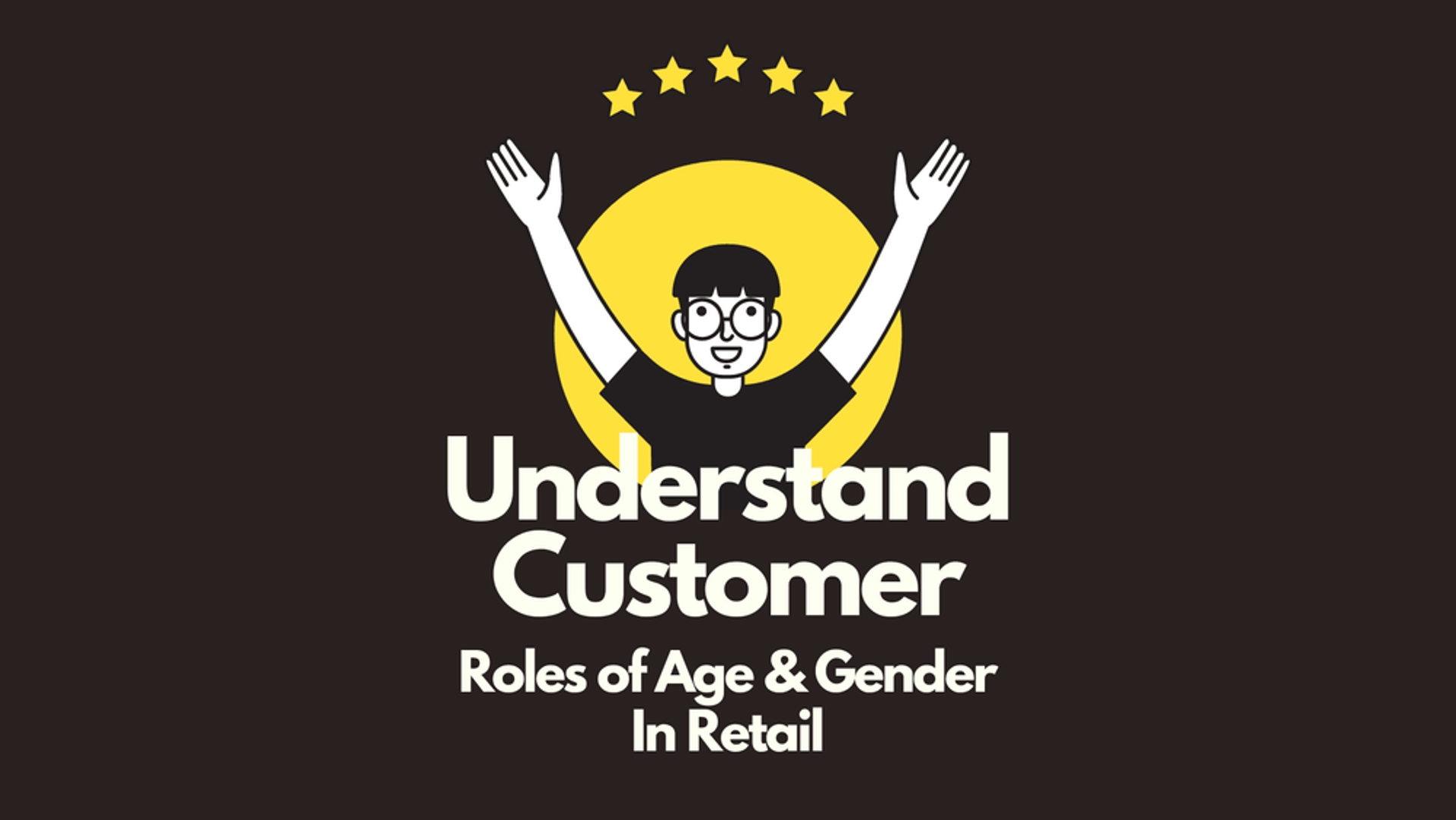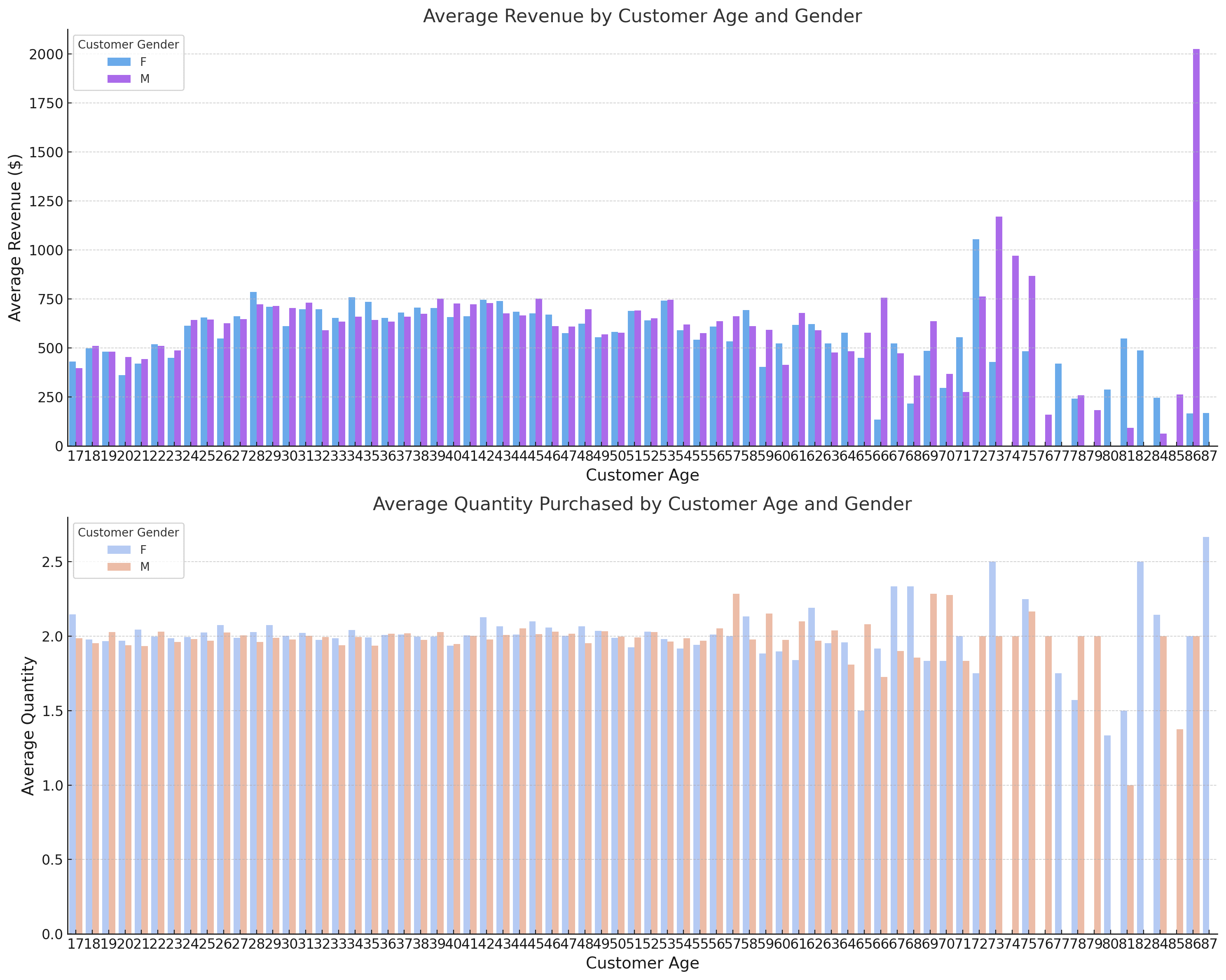Published
- 4 min read
Understanding Consumer Behavior: The Role of Age and Gender in Retail Purchasing

Introduction
In retail, not all customers are created equal. Their purchasing habits are influenced by various demographic factors like age and gender. By analyzing sales data through these lenses, retailers can gain a granular view of their customers, which allows them to customize marketing and merchandising strategies. This data-driven approach helps attract a broader, more targeted customer base.
This article will analyze how age and gender impact customer behavior in retail stores. Keep reading to uncover insights you can immediately apply to boost sales.
Key Factors Influencing Buying Decisions
Consumer behavior is multi-faceted, driven by a mix of cultural, social, personal, and psychological factors. When it comes to retail, two key demographic elements stand out - age and gender.
- Age indicates consumers’ life stage, which shapes needs, priorities, and buying power. For instance, younger shoppers may focus on trendy affordable items, while older ones prefer premium products.
- Gender influences preferences and shopping habits. Women often shop more frequently and spend more time browsing than men.
Let’s examine how these two factors specifically impact retail purchasing through data analytics.
Findings: Sales Data Insights by Age and Gender
Granular sales data reveals variations in consumer behavior across different age groups and genders. Here are key insights for retailers:
Spending and Purchase Volume by Age
- Teens (13-19 years) have average transaction values of $300-$400. They purchase 1.8-2.2 items per transaction.
- Young Adults (20-35 years) spend the most, averaging $450-$550 per transaction. They buy 2.5-3 items per store visit.
- Middle-aged adults (36-55 years) spend moderately at $350-$450 per transaction, buying 2-2.5 items.
- Seniors (55+ years) have the lowest per-transaction spend at $250-$350 but purchase higher-priced items, with 1.5-2 items per basket.
Gender Differences in Purchasing
- Women tend to buy more frequently, visiting stores 3-4 times a month versus 2-3 times for men.
- Men often spend more per visit - around $25 higher than women on average. However, women’s total monthly spending is 20-30% higher due to more frequent purchases.
- Product categories differ - women spend more on clothing and accessories, while men purchase more consumer electronics and hardware items.
Additional Insights
- Higher earners, especially in older age brackets, focus on quality over price. They are key targets for premium merchandise.
- Younger female shoppers drive trends like sustainable fashion and clean beauty. Catering to them can boost mindshare.
- Store loyalty increases with age. Seniors are more likely to consistently frequent the same retailers.

Strategic Implications for Retailers
These insights highlight how age and gender distinctly impact consumer behavior. Some key takeaways for retail strategy:
- Marketing: Campaigns can be tailored by age and gender - teen-centric ads on social media, senior discounts, and male-focused loyalty programs.
- Merchandising: Product assortment and promotions can align to target customer groups. More trendy affordable fashion for young women, premium electronics for older men.
- Store Layout: Department placement and signage can guide different groups to relevant merchandise. For instance, senior-friendly floor planning and tech product demonstrations for older shoppers.
- Staffing: Having associates proficient at serving key demographics enables more customized assistance during shopping journeys.
- Digital Strategy: Online channels can be leveraged to connect with target generations. An active social media presence appeals to Millennial and Gen Z shoppers.
The common thread is hyper-personalization based on age and gender. Brick-and-mortar retailers have an edge here through data analytics. Online shopping provides less visibility into who exactly buys what.
The Bottom Line
Customer demographics significantly impact purchasing behavior. Analyzing sales data by age and gender provides retailers with powerful insights to drive strategy. Key takeaways include:
- Spending varies across age groups due to life stage needs and wallet size. Teens and young adults spend the most per transaction.
- Women shop more often and have higher total monthly spending. Men spend more per individual trip.
- Preferences diverge by gender, with women focusing more on clothing and accessories.
- Store loyalty rises with age. Seniors are ideal targets for retention programs.
These insights enable hyper-personalization. Combined with in-store execution, retailers can turn data into dollars and build their bottom line. The key is converting analysis into action.
FAQs
Q: What other factors besides age and gender impact consumer behavior?
A: Income, education, ethnicity, marital status, and psychographic traits (personality, values, attitudes) also influence shopping habits. But age and gender provide a helpful starting point.
Q: How can you track sales data by demographics?
A: Retailers can poll customers for demographic info during transactions or use data mining tools to uncover correlations in basket data. Loyalty programs also provide member demographic data.
Q: Are there legal considerations when collecting and using customer data?
A: Yes, privacy regulations like GDPR apply. Transparency and consent are crucial. Retailers should anonymize data and only use it for segmentation, not individual profiling.